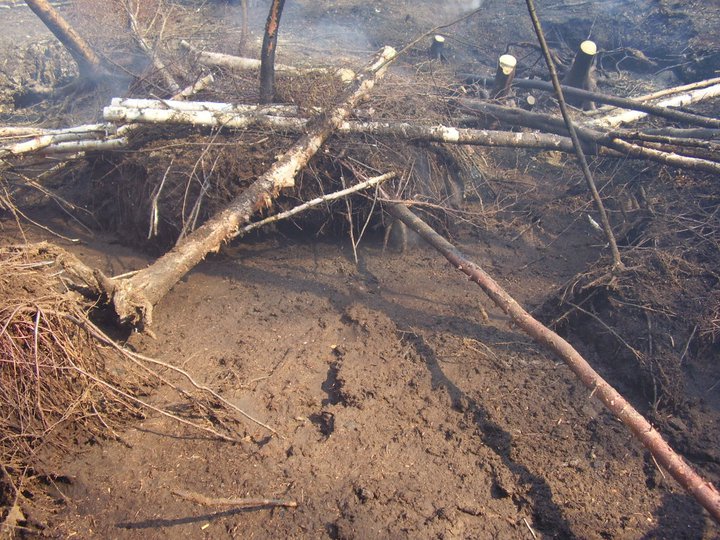IUFRO Spotlight #10 – For Peat’s Sake
For Peat’s Sake
By Björn Hånell, Coordinator, IUFRO Division 1 (SLU, Sweden), and
Jean-Michel Carnus, Coordinator, IUFRO Division 8 (INRA, France)
Forest fires are a persistent and growing problem around the world. While fire certainly produces some ecological benefits, those are arguably being outweighed by the increasing frequency, size and intensity of fires as the planet warms.
In a given year, forest and grassland fires can be extensive – burning 350- 450 million ha (an area larger than India); expensive – costing many billions of dollars to combat (in Canada alone fire management costs can reach $800 million a year); and lethal – a recent study attributed almost 340,000 deaths annually to respiratory and other causes related to the impact of forest/bush fires.
Making the situation more worrisome are predictions that these fire events could triple in the next 50-75 years.
A recent Canadian Forest Service bulletin: Peatland Fires and Carbon Emissions (Frontline Express 50 http://cfs.nrcan.gc.ca/publications?id=33351) noted that some fire researchers from Canada, the U.S. and Russia – where fire in those countries’ boreal forests is a significant activity – have begun looking more closely into boreal peatlands.
Peatland ecosystems cover only 2-3% of the earth’s land surface, but in the boreal they make up 20-30% of the forest region and average 20-30% of the area burned annually.
Those peatlands store an estimated 30% of the world’s terrestrial carbon – some 300 billion metric tons. Typically they are fairly wet areas, but when they dry and burn – usually in severe drought years or from some drainage activities – they have the potential to flip from carbon sink to carbon source as they release huge amounts of greenhouse gases.
How significant are the emissions from peatland fires? In 1997 in Indonesia peatland fires released the equivalent of 20-40% of all annual global fossil fuel emissions. And Indonesia’s peatlands are dwarfed by the peatland reserves in Canada, Alaska and Russia.
Peatland fires tend to produce a lot of smoke and can be difficult to extinguish. In the north they can continue to smoulder stubbornly beneath the winter snow and then burst into flame again in a subsequent year.
Smoke, as noted above, also makes human health a major consideration in peatland fires. Smoke is toxic to begin with, but peatlands contain about 15 times as much mercury – a serious toxin – as nearby upland forests. The mercury-laden smoke can travel far. Recently in Russia, smog permeated Moscow from peat fires many kilometers distant and, within the last few months, air quality advisories were being issued in parts of British Columbia on Canada’s west coast as smoke from Siberian peat fires pushed ozone levels to neverbefore- seen numbers.
While quite a bit is known about the function and behavior of fire in the boreal forest, much of the research there has been on upland forest areas. By comparison, much less is known about the vulnerability of boreal peatlands to fire.
One of the key areas being investigated in the boreal peatlands is focused on developing a peat moisture code. By getting a better handle on peatlands moisture content, researchers will know the potential for burning, when it might occur and how deep it will burn. That will help preparation and mitigation efforts.
A report by J.M Waddington (McMaster Centre for Climate Change, McMaster University) and colleagues suggests that such a code can be developed – with modifications to adapt to specific peat types and issues – within the framework of the existing Canadian Forest Fire Weather Index (FWI) System.
The FWI System (or portions of it) has been adopted – with adaptations for local conditions – by several countries as a fire management tool: New Zealand, Fiji, Portugal, Spain and several U.S. states, among them.
There are six components to the FWI System. Three are fire behavior indices – related to rate of fire spread; available fuel; and frontal fire intensity.
The other three components, those most germane to this topic, relate to fuel moisture. They are numeric ratings of the moisture content of litter and other fine fuels; the average moisture content of loosely compacted organic layers; and the average moisture of deep, compact organic layers.
The ratings give indications of factors ranging from ease of ignition and flammability of fine fuel, to the amount of smoldering in deep duff layers and large logs.

